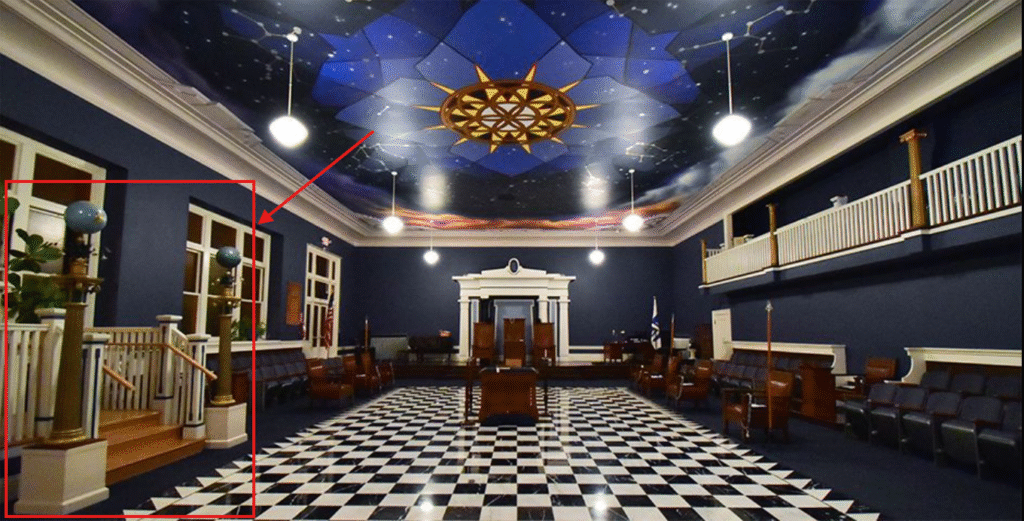
Freemasonry’s complicated weave of symbols has evolved over centuries, influenced by religious art, Enlightenment concepts, operative lodge activities, and contemporary design sensibilities. The All-Seeing-Eye (Eye of Providence) and twin pillars (Boaz and Jachin) reflect the interplay of meaning and style, making them iconic symbols.
The All-Seeing Eye: From Divine Gaze to Masonic Emblem with Ancient and Biblical Roots. The depiction of God’s watchful eye dates back to Hebrew Wisdom literature (e.g., Psalms and Proverbs), where it represents omniscience and moral oversight. Ecclesiasticus, writing in the second century BC, described God’s eye as “ten thousand times brighter than the sun,” which inspired the triangle halo design.
Renaissance and Early Modern Art

Late Renaissance artists depicted the Eye of Providence within radiant clouds or triangles to represent the Trinity, combining Christian symbolism with geometric precision.
Adoption into Freemasonry (late-18th century)

In Thomas Smith Webb’s The Freemason’s Monitor (1797), the Eye symbolizes the “Great Architect of the Universe” who observes all thoughts and actions. Personal seals, like Bro. Robert Moray’s (1609-1673), featured a center eye surrounded by radiating lines, foreshadowing the adoption.
19th and 20th century interpretations
Victorian Masonic academics, like Albert Mackey (about 1870), saw the Eye as a symbol of divine omnipresence and moral accountability in Craft rites (The Square Magazine). Lodge regalia, aprons, and room embellishments featured stylized line art and filigree, reflecting modern engraving and printing methods.
Modern stylizations
Modern Masonic art combines minimalist vector designs (sharp triangles and concentric halos) with classic radiating glory, making the symbol adaptable to digital and print media.
Boaz and Jachin: From Biblical to Operative Beginnings

According to Scripture (1 Kings 6:15-17; 2 Chronicles 3:15-17), King Solomon’s Temple entry was flanked by two bronze pillars, Jachin (“He shall establish“) and Boaz (“In Him is strength“), decorated with lilies, chains, and pomegranates (Scottish Rite, NMJ). Freestanding columns were used by medieval stonemasons to designate boundaries and passages; they also symbolized stability and sacred thresholds.
Allegorical Integration in Speculative Masonry
Early speculative lodges used the pillars as moral and spiritual gatekeepers, with one expressing duty and the other establishing principle (Scottish Rite, NMJ). Ritual lectures began to include temple architecture in the candidate’s path, employing pillars as symbolic markers.
Design Variations Across Centuries
During the 18th-19th centuries, lodge aprons and engravings featured intricate Corinthian or Ionic designs with classical capitals and bases, similar to early-19th-century French aprons. In the 20th century, simplified Art Deco and streamlined interpretations emerged, featuring monolithic shafts and geometric capitals suitable for modern printing and digital reproduction.

Contemporary Lodge Usage

Modern lodges often feature simplified pillars, like wooden cylinders with painted globes, which reflect regional lodge layout while providing balance and stability (Scottish Rite, NMJ).

